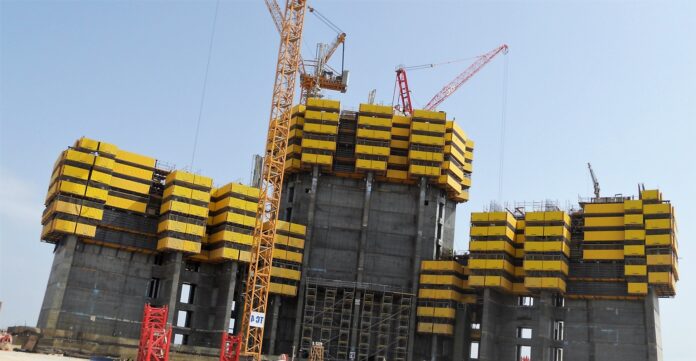The Definition and Current Status of Megatall Buildings
As per the Council on Tall Buildings and Urban Habitats (CTBUH), a structure that stands taller than 1,968 feet is considered a megatall building. Presently, there exist only three such structures – the Burj Khalifa in Dubai, the Shanghai Tower in China, and the Makkah Royal Clock Tower in Saudi Arabia. However, brace yourself for a mind-boggling statistic – this number will more than double by 2020 with the completion of four more megatall buildings – the Ping An Finance Centre in Shenzhen, the Greenland Center in Wuhan, the Merdeka PNB118 in Kuala Lumpur, and the Kingdom Tower in Jeddah.
The Evolution of Structural Systems: A Pathway to the Skies
The history of tall buildings dates back to the 19th century, but it was only in the 20th century that the skeletal construction with structural steel, as first used in the Home Insurance Building in Chicago, was seen to pave the way for taller buildings. The tube structure, invented by Fazlur Khan in the 1960s, entailed the installation of columns along the building’s exterior that were connected to each other and the core of the building, resulting in more usable floor space. However, as the building’s height increased, the base of the building had to grow proportionally, necessitating a much larger footprint for supertall buildings. The buttressed core system came next, developed for the Burj Khalifa, and the Kingdom Tower will soon introduce the next evolution of this structural system – the stayed buttressed core.
Wind Mitigation Strategies: Outsmarting the Skies
Tall buildings sway in the wind, but engineers are not only aware of this fact but they have also designed them to do so. Mass dampers installed near the top of the building act as a counterweight and reduce the movement of the building. Other wind mitigation strategies include tapering the building’s design as it rises, putting in notches or varying cross-sections to confuse the wind, and having openings through the middle of the building to weaken wind vortices. It’s a never-ending challenge to outsmart the skies!
Elevator Transportation Systems: Reaching for the Heights
Heavy steel cables that lift elevators limit the height an elevator can safely travel. However, KONE’s UltraRope technology features a carbon fiber core encased in a high-friction coating that weighs 90% less than equivalent steel cables, lasts twice as long, and allows elevator cars to travel up to 3,281 ft. ThyssenKrupp’s MULTI system aims to completely eliminate the use of cables, enabling elevators to reach heights far beyond those allowed by UltraRope technology. The role of technology, such as 3D printing, BIM, and 3D computer modeling, also plays a crucial part in designing and building taller buildings, including the elevator transportation systems.
The Future of Megatall Buildings: Beyond Limits
Building taller structures will always come with a significant price tag. Nevertheless, more than 140 supertall skyscrapers are currently under construction worldwide, and proposals for even taller buildings, such as the Bride of the Gulf in Iraq, continue to emerge. But ultimately, for most tall buildings, the height is limited by how much money someone is willing to pay to get there. Nevertheless, the need for innovation and technological advancements in engineering and construction will continue to push the boundaries of what is possible, leading to the emergence of even taller structures in the future.
The Need for Innovation: Meeting the Demands of Urban Areas
As the world’s population grows, the demand for space in urban areas also increases. The development of megatall buildings provides a solution to this issue, but it requires engineers to find new and innovative ways to defy gravity, wind, and seismic loads. The evolution of structural systems, wind mitigation strategies, and elevator transportation systems are some of the ways engineers are meeting this challenge. With the advent of technology, engineers can now prototype multiple building components and test them in wind tunnels using 3D printing. BIM and 3D computer modeling enable architects and engineers to assess how the building will perform in real-world environments, reducing redundant structural elements. Breakthroughs in vibration reduction and pressure regulation have also made faster elevator travel speeds more comfortable and less nauseating. The need for innovation is imperative to meet the demands of the ever-growing population.
The Role of Technology: Designing the Impossible
Technology also plays a crucial role in the design and construction of megatall buildings. It enables engineers to design and prototype multiple building components and test them in wind tunnels using 3D printing technology. BIM and 3D computer modeling enable architects and engineers to assess how the building will perform in real-world environments, reducing redundant structural elements. Breakthroughs in vibration reduction and pressure regulation have also made faster elevator travel speeds more comfortable and less nauseating. As technology advances, it will continue to play a vital role in the development of megatall buildings.
The Future of Megatall Buildings: A New Era of Building Skyscrapers
The trend of building taller structures is set to continue, with more supertall skyscrapers and megatall buildings currently under construction worldwide. However, cost remains a significant factor in building taller structures, and it may be limited by the amount someone is willing to pay to reach greater heights. Nevertheless, the drive for innovation and technological advancements in engineering and construction will continue to push the boundaries of what is possible, leading to the emergence of even taller structures in the future. The future of megatall buildings is promising, and we can’t wait to see what the next era of building skyscrapers holds.
Conclusion
In conclusion, the development of megatall buildings has revolutionized the construction industry, pushing the boundaries of what was once thought impossible. The evolution of structural systems, wind mitigation strategies, and elevator transportation systems are just a few of the ways engineers are meeting the challenges of building taller structures. Technology plays a crucial role in designing and building these structures, from prototyping components to assessing real-world performance. As the world’s population continues to grow, the demand for space in urban areas will increase, and engineers must continue to innovate to meet this demand. While cost remains a factor in building taller structures, the drive for innovation and technological advancements in engineering and construction will continue to push the limits of what is possible. The future of megatall buildings is exciting, and we look forward to seeing what new heights engineers will reach in the years to come.















